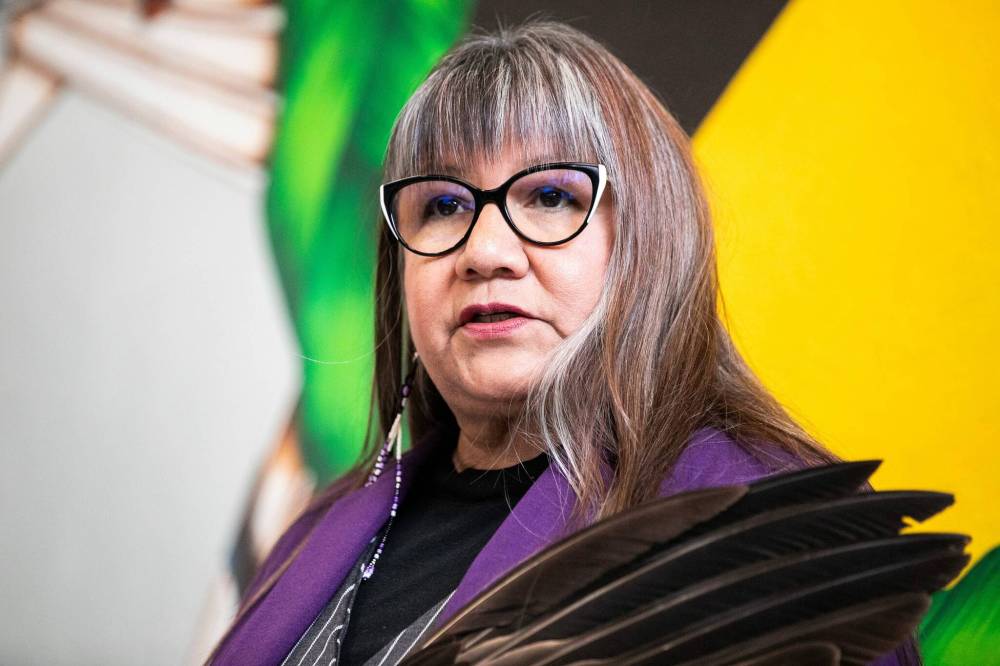The Manitoba Advocate for Children and Youth renewed calls for a provincial youth-based addictions strategy after a report based on conversations with young people who use drugs and the service providers who support them was released by her office Thursday.
The report, which interviewed 39 young people between the ages of 14 and 25 and more than 120 service providers, paints a bleak picture of the state of youth addictions support in Manitoba.
The majority of the people interviewed said they weren’t aware of the variety of support services available to them, and some said they first learned of the services through involvement with the justice system.

MIKAELA MACKENZIE / FREE PRESS FILES
Provincial advocate Sherry Gott was not surprised by the report.
Many of those who were aware of the help available to them said wait lists were long and discouraging, and some reported either abandoning their search for help or accepting more timely services that didn’t meet their needs.
Those issues are exacerbated in rural or northern communities.
“This report didn’t surprise me at all,” provincial advocate Sherry Gott said Thursday.
“Our findings didn’t surprise us, because we know that we’ve had systemic issues with regards to youth addictions and mental health for a long time.”
Earlier this year, MACY called on the province to build an addictions strategy focused on young people after the office’s data showed that the number of cases related to youth addictions jumped from three per cent in 2018-19 to 22 per cent in 2022-23.
The report released Thursday has no recommendations, in part, because Gott is waiting for the province to act on calls to action from previous reports.
“We are still waiting, we know that they are working on the strategy,” she said. “Right now, their focus is on adult addictions, and we know that it’s a very complex form of work that needs to be done. So we are hoping that there will be a strategy developed and released.”
A youth-focused strategy from the province is coming, but there’s no timeline in place yet, Housing, Addictions and Homelessness minister Bernadette Smith said.
“We’re working on a suicide prevention strategy right now, we have several youth that are on that committee,” she said.
“And we know that several of our northern and rural communities are impacted especially, so we have a lot of representation on our committee from those communities.”
Thursday’s report also describes a connection between past hardship and current substance use. Nearly half of the youth interviewed disclosed a history of trauma, including sex trafficking and exploitation, abuse, housing instability and poverty.
Nearly a quarter had been or currently were incarcerated, with their substance use being a factor for many.
Sunday Queskekapow, a 23-year-old from Norway House Cree Nation, faced homelessness in that community before having to move to Winnipeg to receive care.
“One of the most urgent things right now is access to harm reduction,” said Queskekapow, who attended the release of the advocate’s report.
“Because harm reduction is care, and harm reduction is saving our communities and de-stigmatizing it, too, especially in our northern communities.”
Those concerns are reflected in MACY’s report. Nearly a third of the youth interviewed said they did not have access to a safe supply of the substance they used, and both the youths and service providers said gaps in harm-reduction services across the province was an urgent issue.
MACY’s annual report highlighting the number of youth deaths caused by addiction in Manitoba will be released in the coming months, Gott said.
— With files from Carol Sanders
malak.abas@freepress.mb.ca

Malak Abas
Reporter
Malak Abas is a city reporter at the Free Press. Born and raised in Winnipeg’s North End, she led the campus paper at the University of Manitoba before joining the Free Press in 2020. Read more about Malak.
Every piece of reporting Malak produces is reviewed by an editing team before it is posted online or published in print — part of the Free Press‘s tradition, since 1872, of producing reliable independent journalism. Read more about Free Press’s history and mandate, and learn how our newsroom operates.
Our newsroom depends on a growing audience of readers to power our journalism. If you are not a paid reader, please consider becoming a subscriber.
Our newsroom depends on its audience of readers to power our journalism. Thank you for your support.